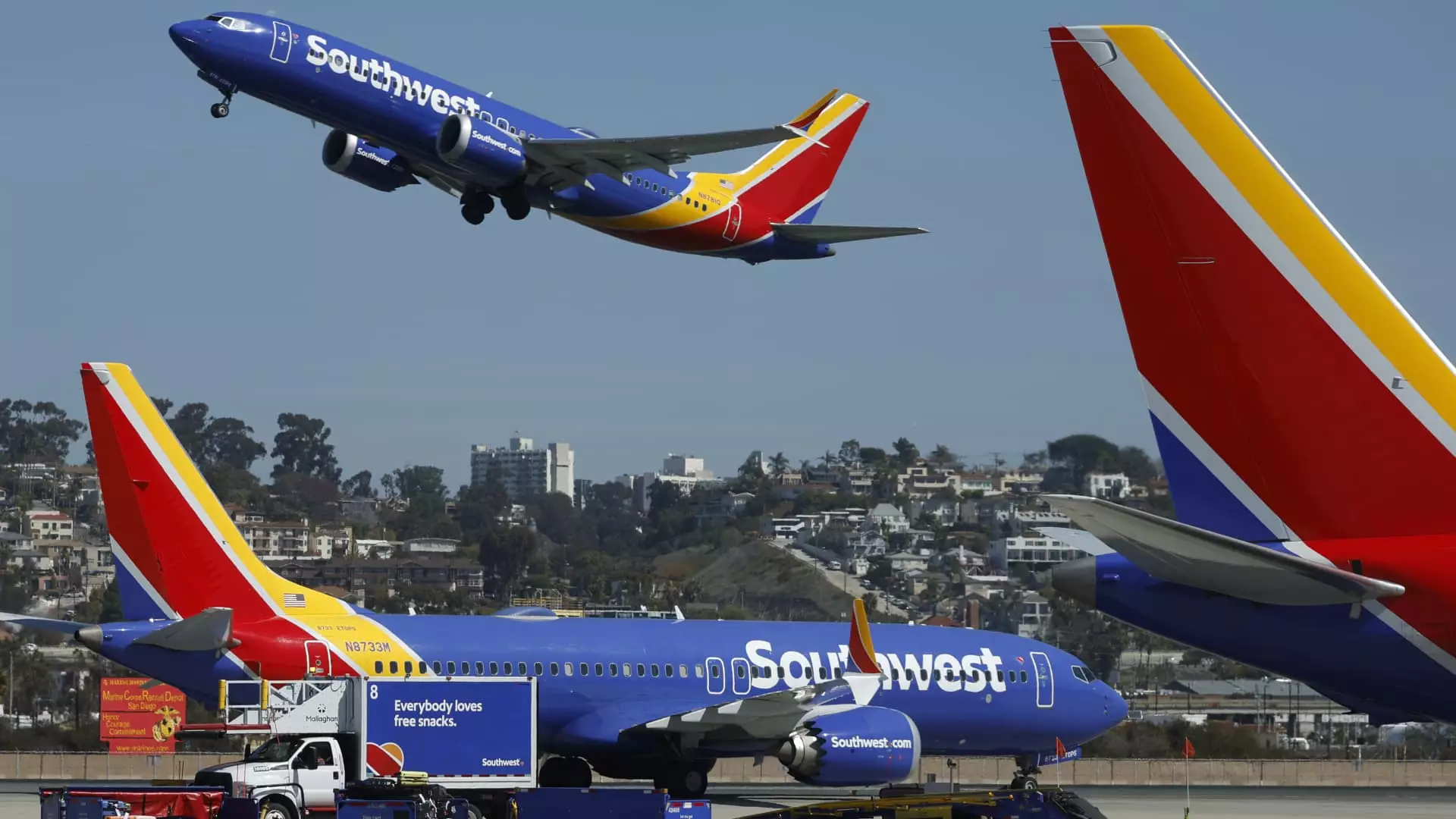In an era where consumer expectations soar high, Southwest Airlines stands at a crossroads, navigating an intricate web of evolving demands and stiff competition. The airline’s CEO, Bob Jordan, recently revealed intentions to overhaul core offerings, venturing into territory previously uncharacteristic of the carrier known for its budget-friendly approach. The incorporation of airport lounges, premium seating options, and potentially long-haul international flights indicates a significant pivot towards attracting wealthier clientele. This transformation aims to answer the existential questions posed by financially-conscious travelers who currently defect to competitors offering what they perceive to be superior service.
While the aggressive expansion of services might appease stockholders and satisfy a small segment of the flying public, it raises questions about the core principles of the Southwest brand. For more than half a century, the airline has thrived on an ethos of inclusivity and affordability. However, casting a wider net to ensnare high-spending customers could threaten the very identity that has garnered its loyal base. Are we witnessing the birth of a new, class-divided airline culture, or is this merely a reaction to an increasingly competitive market?
Challenges of Changing Identity
The past few years have not been kind to the airline industry, with fluctuating economic conditions leading to decreased airfares. Jordan’s candid acknowledgment of the current promotional pricing—making luxury travel deceptively accessible—hints at an unsettling truth: the airline is grappling with identity crises. Traditional Mexican gold and silver have started picking up right where they left off, as a dwindling number of travelers opt for experiences that offer more than just a ticket on a Boeing 737. The emphasis on ‘no-frills’ basic economy fares, which lack the trappings of a richer flying experience, could alienate those who once took pride in being part of the Southwest community.
In a move that reflects the pressures from an activist investor, Jordan spoke about the need to modernize. While the introduction of innovative travel policies might be practical, they also signal a potential departure from the egalitarian nature of the airline’s service ethos. A move towards high-end offerings may enrich the brand’s revenue streams, but at what cost? Are we to accept a tiered system of air travel that erodes the sense of community that sets Southwest apart?
Longing for Luxury and Short Sales
Interestingly, the very demographic that is eager for luxury—such as travelers departing from Nashville International Airport, which boasts a significant 50% market share for Southwest—may evolve into a double-edged sword. The craving for an upscale flying experience could draw them toward competitors who are adept at catering to their desires. This brings about a stark trade-off: to enhance profit margins by chasing after affluent passengers, Southwest risks losing its identity and its grassroots appeal.
Jordan’s comments about potential luxury improvements underscore a dual strategy that seeks immediate revenue infusion while grappling with longer-term brand ramifications. As American, Delta, and United flex their muscles through expanded lounge offerings and upgraded services, the pressure mounts. It marks a point of inflection for Southwest, offering a glimpse into a possible future not yet set in stone. Could an eventual pivot enable Southwest to weather the storm of fiscal uncertainty, or might it inadvertently compromise its foundational principles?
The Dilemma of International Expansion
One of the most tantalizing prospects emanating from the recent statements is the possibility of venturing into long-haul international flights. For years, the Boeing 737 has been the backbone of Southwest’s fleet, and the prospect of acquiring new aircraft that can traverse oceans is thrilling yet daunting. However, Wright’s law dictates that the marginal cost of expanding provider networks often overwhelms short-term gains, leading to disastrous outcomes.
As Southwest forges international partnerships with entities like Icelandair and China Airlines, an impending question lingers: does ambition risk overshadowing prudence? The bustling transatlantic market is undoubtedly attractive, but it’s accompanied by clarity regarding the underlying costs and logistics involved. Southwest must navigate not only the financial ramifications of acquiring new airframes but also the regulatory and operational challenges that accompany long-haul service.
In attempting to redefine its presence in the global market, will Southwest preserve the unique brand connection that its customers cherish? Or will it risk morphing into another faceless airline lost in the commercial fray? Each twist and turn in this narrative serves as a poignant reminder that the balance between evolution and identity is tenuous, and the stakes could not be higher.



Leave a Reply